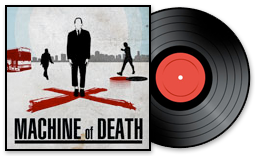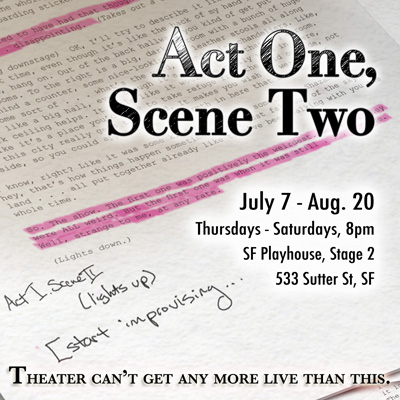Monthly ArchiveJuly 2011
Vol2 Updates 08 Jul 2011 04:09 am
Three contests for the final week!

Matt has made it clear that his goal for MOD2 is to receive submissions from ALL SEVEN CONTINENTS. So far we’ve hit six of the seven, with only Antarctica lagging behind. (Get with the program, Amundsen-Scott researchers!!)
But personally, I’m gunning for a different milestone. From the beginning, I’ve been hoping that we exceed the 675 submissions we received in 2007 for Volume 1 — to me, although it’s truthfully arbitrary, exceeding the Vol.1 number means that we’re making progress. We’re making headway toward something bigger and better.
Looking at the submission data, I think it’s clear that we’re going to beat that number. We have 7 days left, and we’re already up past 615 (635 if you count the 20 stories we received from British middle schoolers in a big lump submitted by their teacher — but for the sake of this post we won’t count them).
So the big question is…WHEN will we beat the Vol.1 number? When will we receive our 676th submission for Vol.2?
That’s what we’re asking YOU — this is a carnival game, a count-the-beans-in-the-jar question.
Leave your answer (down to the minute!!) in the thread on our Facebook group, and the closest guess will win a prize — one of anything from our new TopatoCo store! There are more rules and stats and even a graph over on Facebook to help you make your guess.
BONUS GAME: What will the name of the record-breaking submission be? There’s a thread for that too! If you guess this one correctly, you’ll get a SUPER MEGA PRIZE.
TRIFECTA CHALLENGE: How many submissions will we receive total? Heck, if you nail ALL THREE predictions we’ll give you $100. Just for fun.
Vol2 Updates 06 Jul 2011 10:30 pm
How to finish your story in one week or less
This post is not for everybody. For instance, this post is not for those of you who are finished or just about finished with your Machine of Death stories. You guys are doing fine. And this post is not for those of you who have yet to start or who have barely started. You guys should go read David’s post from a couple days ago.
No, this post is specifically for those of you who have about half of a story and about one week to finish it. It’s for those of you who are feeling increasingly panicked as the deadline ticks ever closer. It’s for those of you who are saying to yourselves, I’m almost out of time! What the heck should I do now???
First thing first: DON’T GIVE UP THE SHIP. We want to read your story. In order for that to happen, we need to have it by midnight on July 15. And we have faith in you. We know you can do this. But here are some thoughts that might help point you in the right direction.
1. Figure out what the pay-off scene is.
Just about every short story has a pay-off — some thrilling climactic moment that the characters are working towards and the reader is reading towards. This is the engine that’s been pulling your story along so far. If you don’t already know what the pay-off in your story is, figure it out. Sit down and ask yourself, If I were reading this story, what’s the one thing I’d be most interested in seeing?
Here are some examples of pay-offs: the big gunfight, the tearful reconciliation, the unmasking of the killer, the championship game, the arrival of the hurricane, the battle of the monsters, the revelation of an old secret, the sinking of the ship, the expression of true love. Whatever your pay-off scene is, it’s probably the one that you’ve been wanting to write this entire time.
2. Now that you know what the pay-off is… Write it immediately!
This is not advice that I would give to everybody in every situation. This is advice that I am giving to you, o time-crunched writer, in this particular circumstance. With one week left and with everything else going on in your life, you probably don’t have time to write the entire story you wanted to write. Something will get short shrift.
So why write the pay-off scene first? To make sure that this scene — the most important scene in your entire story — isn’t the one that gets shafted. It doesn’t matter how wonderful the rest of your story is… If the ending feels rushed, forced, and underdeveloped, readers are going to come away disappointed. Much better to gloss over some of the stuff in the middle but still deliver the boffo pay-off you’ve been picturing in your head for the past nine weeks.
3. Plot out the shortest possible route to connect the beginning with the pay-off.
Now you’ve got two disconnected sections with a big hole in the middle that needs to be filled in. Sit down and ask yourself, How much of this hole really needs to be filled in? Sure, you had big plans for subplots and symbolism and backstories and descriptions. But we’re in emergency mode now. Our job is to connect A to Z as quickly as possible — with a couple of caveats.
Don’t leave out important plot points. You still need to tell a proper story that makes sense. Don’t summarize vast sections of ancillary events that you’d intended to write as scenes. At this point, it’s better to leave subplots as loose threads than it is to spend pages explaining how you would have resolved them if you’d had the time. Better yet — cut out the threads entirely if you can, even if that means deleting stuff you’ve already written.
It might feel like you’re going backwards when you delete parts of your story, but you’re not writing towards a word count. You’re writing towards your pay-off, and anything that distracts you from that should be mercilessly jettisoned.
4. Once you’ve come up with the shortest possible route — slash it even further.
Maybe we need to know that your character left a duplicate copy of the microfiche with a friend in Philadelphia for the pay-off of your story to make sense. But does that need to be a scene? It probably only needs to be a sentence. And maybe you were planning to write a detailed first-hand description of the fish market in Seattle in the lead-up to your climax. If that’s so, then skip it.
If you had more than a week to finish your story, it would be fun to play around with these things to see what they add to your story. But this is the time to focus on lean, stripped-down storytelling. You need to get your characters and readers to the pay-off with the suspension of disbelief still intact — but you very well may find that a lot of what goes on in the middles of stories is strictly optional. Don’t be afraid to leave something out of the middle if it’s not driving the plot forward.
5. Go back through your story one more time and rip out any loose threads you can.
If you started writing a bigger, more expansive story, it’s going to feel a little strange if it suddenly flips to a fast-paced race to the climax halfway through. You may need to go back through your story and smooth over those rough edges. It’s fine to have some loose ends in a story — but if there’s any glaring unresolved subplot, it’s probably best to nuke it.
Luckily, it’s a lot faster and easier to delete two pages than it is to write them. But you’ll need to be ruthless. There will be endless tempatations to rewrite sections of your story as you edit and prune. That’s fine — so long as you’ve finished the first draft. Save this part for last so you don’t get bogged down in rewriting while there are still huge chunks of your story missing.
Remember: This is not advice for everybody to use on all stories all the time. Most writers have their own methodology that they’re comfortable with. If you’ve got one that works for you, stick with it. But if your normal method isn’t optimized for emergency action with a deadline marching steadily closer, some new tactics may temporarily be in order.
Events &Podcast Episodes 05 Jul 2011 06:29 pm
Live performance of “MURDER AND SUICIDE, RESPECTIVELY” in San Francisco!
Machine of Death is proud to partner with The Un-Scripted Theater Company of San Francisco for a special, one-night-only live performance of Ryan North’s story “MURDER AND SUICIDE, RESPECTIVELY.”
The performance is part of a show at Un-Scripted called “Act One, Scene Two,” in which actors start with the first scene of an unfinished play — or in our case, they’ll perform Ryan’s piece — and then keep going, improvising the rest of the story to show what happens next. It’s gonna be super-fun, and if you’re in the Bay Area, we’d love to see you there!
The show will be this Saturday, July 9, at 8pm. Tickets are available here!
This is an Official MOD Event — David Malki ! will be in attendance in person, Ryan North will be there on Skype (if all goes well), and we’ll have books and death prediction cards, as well as our super-fancy embosser that proves you were there in person.
EXTRA SPECIAL BONUS: MoD authors Erin McKean (“NOT WAVING BUT DROWNING”) and Shaenon K. Garrity (“PRISON KNIFE FIGHT”) will be on hand to sign books!
(David will also be at the Renegade Craft Fair in San Francisco both Saturday and Sunday.)
Podcast version of this story!
And just to give you a taste — here’s MC Frontalot reading “MURDER AND SUICIDE, RESPECTIVELY” for our podcast. We recommend listening to this one with headphones on.

“MURDER AND SUICIDE, RESPECTIVELY,” by Ryan North. (8 min)
Read by MC Frontalot.
“You don’t see it? What if we could ship this box further away? What if Dr. Merry lived thousands of light-years away, and we could somehow get the box to him? If we set a time for him to do the killing, and for us to run the blood through the machine shortly afterward, then as soon as we read the machine’s prediction, we’ve sent information faster than the speed of light!”
Download the MP3 • Subscribe on iTunes
Direct podcast feed: http://feeds.feedburner.com/machineofpodcast
Ryan North writes “Dinosaur Comics,” your new favourite comic ever in time, which you can read online at qwantz.com and also in books too. He also built Project Wonderful, a site that makes online advertising not suck, and ALSO makes it awesome. He is a tall drink of water who lives in Toronto with his wife Jenn.
MC Frontalot was born Maxwell Claudio Frontasako behind a Boise Walmart in 1973. The fronting has increased exponentially since. Sixteen years of rap stardom, fourteen world tours, and hundreds of platinum albums find MC Frontalot threatening retirement. His legion of fans will sob quietly to themselves.
In the book, “MURDER AND SUICIDE, RESPECTIVELY” is illustrated by Aaron Diaz.
Vol2 Updates 04 Jul 2011 06:10 pm
How to craft a story about a single anything.

One of the many amazing needle-felted monsters made by Moxie.
There are now only 11 days left until Volume 2 submissions close. That’s not much time, right? If you’re still dithering or haven’t started working on something, are you already plumb out of luck?
Maybe not. If you haven’t submitted yet, or even started on a submission — I still think it’s possible to put together a shortish, one-to-two-thousand word piece in the time remaining.
But why would you? Is that really enough time to tell an interesting story?
Yes, absolutely! And here’s why stories don’t always need to be epic to be interesting.
An example from improv
Improv theater teaches you that “whatever the scene starts being about, is what it’s about.”
Improv is written collaboratively, as the actors discover and affirm and reinforce each other’s choices. It’s a structure that’s built, brick by brick, by every player in the scene. If information is presented in a scene — say, if one person says “I’m hungry” — then that’s a single brick.
It’s possible for the next player to say “Me too,” and the first person to respond “I wonder what’s for lunch,” and so on — because they haven’t figured out what the scene’s about yet, and they’re just filling time with small talk, waiting for something interesting to be said that will inform everyone what they should really be talking about. The conversation can continue forever about nothing, as the players place bricks on the ground everywhere, but never two on top of one another.
Sometimes, after a period of feeling around in the dark, the players land on something that feels more substantial — finally figuring out how to bridge those original bricks, or ignoring them and placing more new bricks elsewhere. Other times they never do, and the scene ends up just being a pile of bricks arranged haphazardly.
To avoid this situation, improvisers are taught that whatever the scene starts being about, is what it’s about. If one person says “I’m hungry,” then the second person could say “Well, of course! You haven’t eaten for days!” And the scene would be about that person being hungry. Why are they hungry? What has prevented them from eating? A diet? A stomach trauma? Torture? Are they too poor to buy food? Are they on a hunger strike? Are they always hungry, no matter how much they eat? Do they have a tapeworm? How do the other characters feel about the hunger? How does it make them react?
The point is that there are infinite reasons why that person could be hungry. There’s no reason to place bricks anywhere else, because that simple declaration, “I’m hungry,” is enough. The entire scene can be built on top of it. The character’s hunger can be explored to reveal deeper issues — problems with relationships, or self-esteem, or conflicts with other characters in the scene. Thematic elements can arise. The scene has the potential to become emotionally resonant.
All this can come from just “I’m hungry” — if you will just dig into it, and keep digging. There is never any limit to how deep you can go on even the smallest detail.
Trust that the depth is there.
How does this relate to short stories?
A story can easily be grand in scope, about huge events and a lifetime’s worth of drama. That’s fine.
But it’s also possible to craft stories with much tighter scope. In these last 11 days, if you still want to write a story and you don’t think you can — well, you can. You can make it short, and specific, and about one thing. Not a lifetime, not the birth and death of a marriage, not a worldwide revolution…just, for example, someone who’s hungry.
Stories can start at Level One and go to Level Fifty, hitting a bunch of notes along the way and twisting and turning like a Grand Prix car…
Or, they can start at Level One and go to 1.01, then 1.015, then 1.0151, then 1.0152. They can dig into details. Themes can be illuminated through the use of metaphors — Lucy’s relationship with her mother need not be described over the years; rather we might hear a single conversation that we understand to be typical. Jim’s fear of water need not be recounted in anecdotes from his childhood, but rather his behavior at a beach trip could be described in intimate detail.
In other words, stories can start with a character who’s hungry, and then instead of going past that to show every meal that she eats or doesn’t eat for the rest of her life, she can tell us why she’s hungry. And how that hunger feels, and what she says that indicates what’s led to this, and who else cares about her hunger, and how that person reacts… and by the end of the thing, after we’ve explored this detail that seemed at first to be insignificant, we understand this character’s place in the web of herself and her relationships and her society. Small, rich moments are like pinhole cameras: tiny windows into larger thematic ideas.
It doesn’t have to be long.
And it doesn’t have to be convoluted. If you don’t know what to write, start with anything. If you dig into it, if you ask “why,” if you ask “what does this mean,” if you ask “who does this affect” — I promise you that any small thing at all will be enough.
We’ve received a lot of serious, 4,000-word-plus stories. Many of them are great! The average (mean) length of the stories we’ve received so far is 3,360. The median length is 2,900. So, a lot of longer stories.
This means there’s plenty of room for shorter, punchy, funny (usually “short” and “funny” work really well together) stories in the 1,000-to-1,500-word range.
You still, in other words, have time.
Fan art 04 Jul 2011 07:19 am
The last Machine of Death Monologue is now up!
Here it is, the last in the series by Orpheos! You can watch them all here!
Episode 8 – Waiting for the End of the World from Orpheos.
Big ups to Orpheos for pulling these all together! The quality and professionalism evident in these videos is really great. If you haven’t seen them all yet, check them out! Orpheos has them all on their site, and we’ve got them linked to here.
Hooray!!












